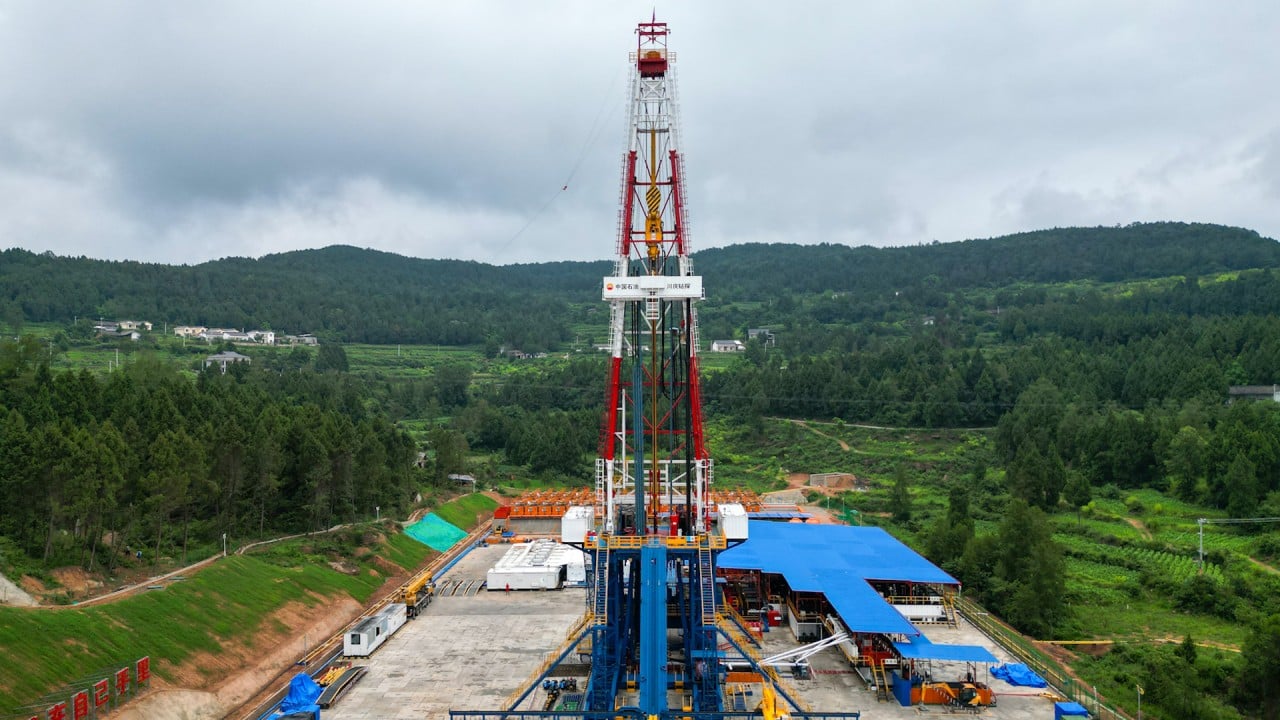
What has driven China to bankroll controversial Ugandan crude oil pipeline?
- Chinese leader Xi Jinping has extended ‘unwavering support’ for East African Crude Oil Pipeline, according to Ugandan President Yoweri Museveni
- Project lets Beijing portray itself as the more reliable development partner after Western investors backed out, observer says
The assessment follows Ugandan President Yoweri Museveni’s revelation earlier this month that his Chinese counterpart, Xi Jinping, had promised his “unwavering support” for the construction of the East African Crude Oil Pipeline (EACOP), set to run from Uganda’s Lake Albert oilfields to the port of Tanga in Tanzania.
“I received a letter from President Xi Jinping of China expressing his support for the EACOP project. I welcome His Excellency’s support and invitation to the energy minister to visit China for further discussions with his government,” Museveni said on April 4.
The letter was hand-delivered by Xue Bing, China’s special envoy for the Horn of Africa, and read by the Chinese ambassador to Uganda, Zhang Lizhong.
Uganda discovered oil in the Lake Albert basin on its border with the Democratic Republic of the Congo nearly two decades ago, but it was not until 2022 that a final investment decision was reached to tap into the resource.
Even the European Parliament became involved, expressing “grave concerns about the human rights violations in Uganda and Tanzania linked to investments in fossil-fuel projects”.
The landlocked East African nation is looking to build the 1,443km (896-mile) buried pipeline so it can move crude oil from two oilfields: Kingfisher to the north of Lake Albert, operated by Chinese oil giant China National Offshore Oil Corporation (CNOOC), and Tilenga at the southern end of the lake, being developed by French oil multinational TotalEnergies.
CNOOC is expected to invest an estimated US$2 billion to US$3 billion to develop the oilfield that is expected to produce 40,000 barrels per day at peak production. The Tilenga oilfield is estimated to cost between US$4 billion and US$6 billion and is expected to produce 190,000 barrels per day.
TotalEnergies controls a 62 per cent interest in the pipeline; the Uganda National Oil Company holds 15 per cent; Tanzania Petroleum Development Corporation has 15 per cent; leaving 8 per cent for CNOOC. Uganda has an estimated 6.5 billion barrels of crude oil – the equivalent of 1.4 billion barrels of recoverable oil.
China’s move seems motivated more by geopolitics than by geoeconomics, as China is no longer as dependent on African oil as it was 20 years ago
Tim Zajontz, a research fellow in the Centre for International and Comparative Politics at South Africa’s Stellenbosch University, said China’s motivation for stepping in appeared less about oil and more about image.
Zajontz said that in Kampala, the Western critique of the pipeline project had been called neocolonial and a hypocritical intrusion in the country’s development path, particularly in light of the West’s own environmental debt.
“China now clearly signals to Kampala and other oil- and gas-rich countries that it supports their developmental ambitions, even if they involve fossil fuels,” said Zajontz, who is also a lecturer in global political economy at the University of Freiburg.
But, he said the dual strategy China was pursuing was not free from contradictions.
But on the other hand, Zajontz said: “Chinese banks and firms – just as [their] Western counterparts – continue to invest in fossil fuels all around the world.

Mark Bohlund, a senior credit research analyst at REDD Intelligence, said Xi’s promise could be seen as an expression of both parties’ desire to move towards a final investment decision on the project.
“With other financiers pulling out of the EACOP project, a higher degree of the financing will have to come from Chinese creditors, who are seeking to avoid lending impairments as experienced in Ethiopia, Pakistan, Sri Lanka and Zambia,” Bohlund said.
Another concern for the Chinese is whether the Ugandans will seek to change the terms of the pipeline deal if it is at risk of debt distress. Bohlund said Uganda was deemed to be at moderate risk of debt default by the IMF and the World Bank, as the country grapples with a higher level of debt at commercial terms and an increase in interest rates.
“The Chinese are also likely to be concerned about the debt-servicing terms if the Ugandan government goes ahead with the standard-gauge railway project with Turkish financing,” Bohlund said.
“The so-called green agenda in the West coupled with unhappiness about Uganda exercising its sovereign right to set its own laws has left the door wide open for Xi to set favourable financing terms and diversify China’s supply side equation,” Satchu said. “It’s a no-brainer from Xi’s national interest perspective.”
In preparation for the building of EACOP, Chinese steel pipe manufacturer Panyu Chu Kong Steel Pipe Co has delivered the first 100km of pipes to Tanzania.
According to the Petroleum Authority of Uganda (PAU), the pipes coming from China will be transferred to the thermal insulation facility in Tanzania for insulation. PAU said the facility was launched in March and commissioning activities were under way.
After insulation, the pipes will be transferred to the main camps and pipe yards, which are spread along the pipeline route. The authority said there were 17 of these yards under construction, in preparation for receiving the pipes and other construction equipment and personnel.
It said the other ongoing construction activities were the civil works at the six oil pumping stations, two pressure reduction stations and the marine storage terminal along the EACOP route.


